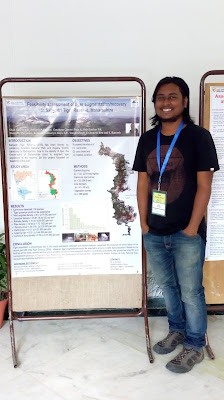The technical side of wildlife research
'Until the lion learns how to write, every story will glorify the hunter' (African proverb)
A competent wildlife researcher is one who is able to adapt well in field as well as in the lab. Being able to write succinctly and communicate research in an easy and effective manner is as desirable as working hard in the field, for a researcher.
After initial several months in the field in Sahyadri, we had to return to the wildlife institute to analyse data and draft a report. During this time in the field, along with gathering some exciting memories, I learned a lot of tools and techniques. Efficient use of a GPS and Google Earth to navigate, camera traps to remotely collect data on mammal occurrence, distance sampling to understand species density and collecting environmental variables to test species-habitat relationship hypothesis were amongst them. Slowly but steadily I started to understand these methods better, with time. I always had a thing for writing, but was never a good writer to start with. Over the years, I have tried to better myself as a writer and communicator.
The wildlife institute provides abundance of opportunities to learn complex methods and models and communicate research to large audiences. Chief amongst them is the annual research seminar (ARS), where all researchers and scientists (old and new) gather and have a give-and-take of their knowledge and provide updates about their personal as well as project work. Personally, I have found the experience both stimulating as well as daunting. My first presentation in ARS in 2017 was in the form of poster where I presented our preliminary results of our tiger feasibility study in Sahyadri landscape. It was a good learning experience.




Comments
Post a Comment